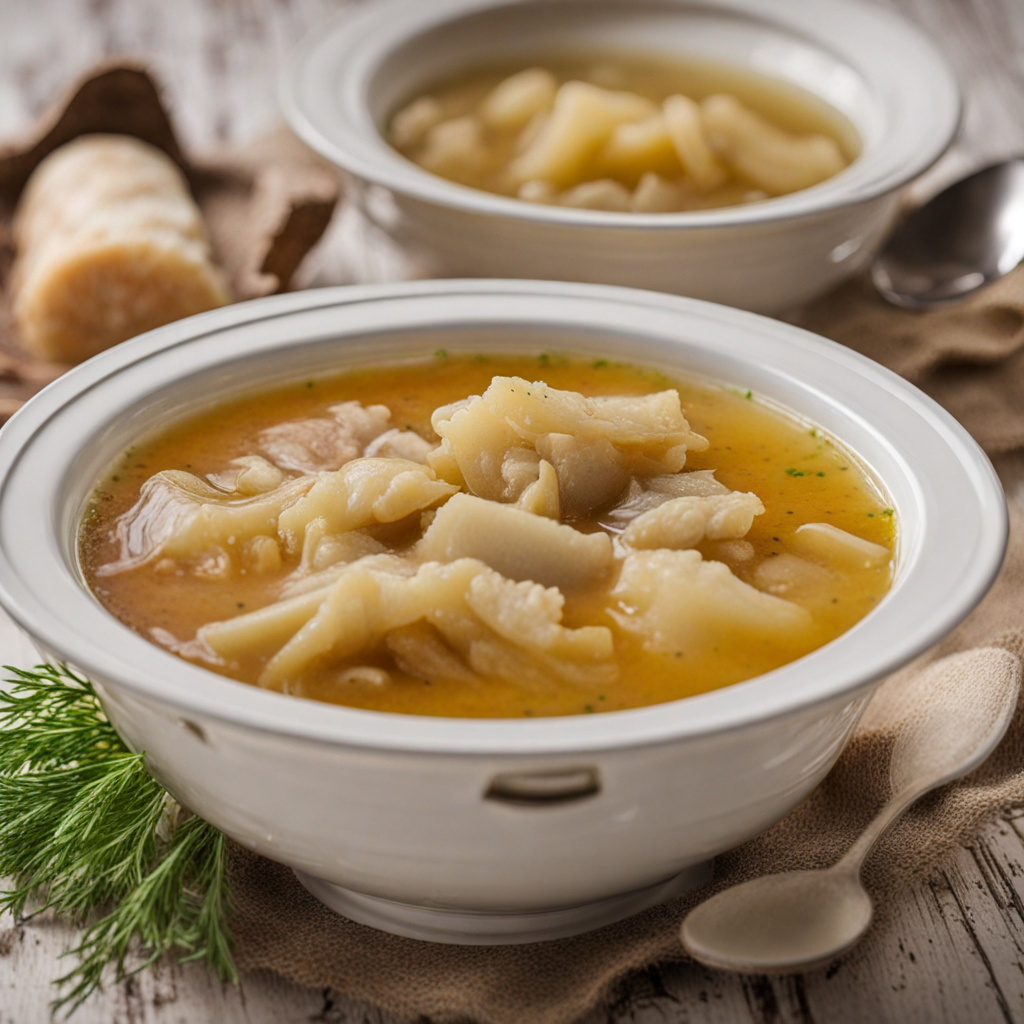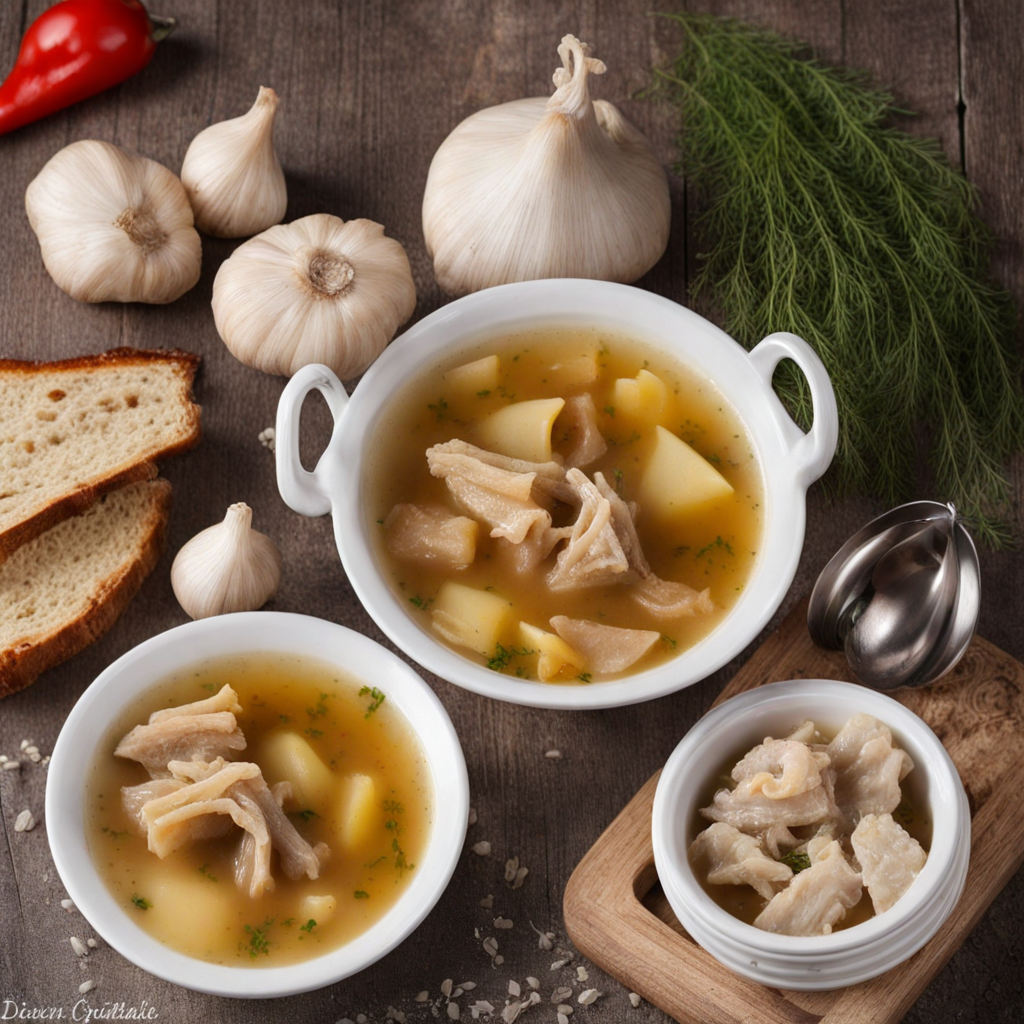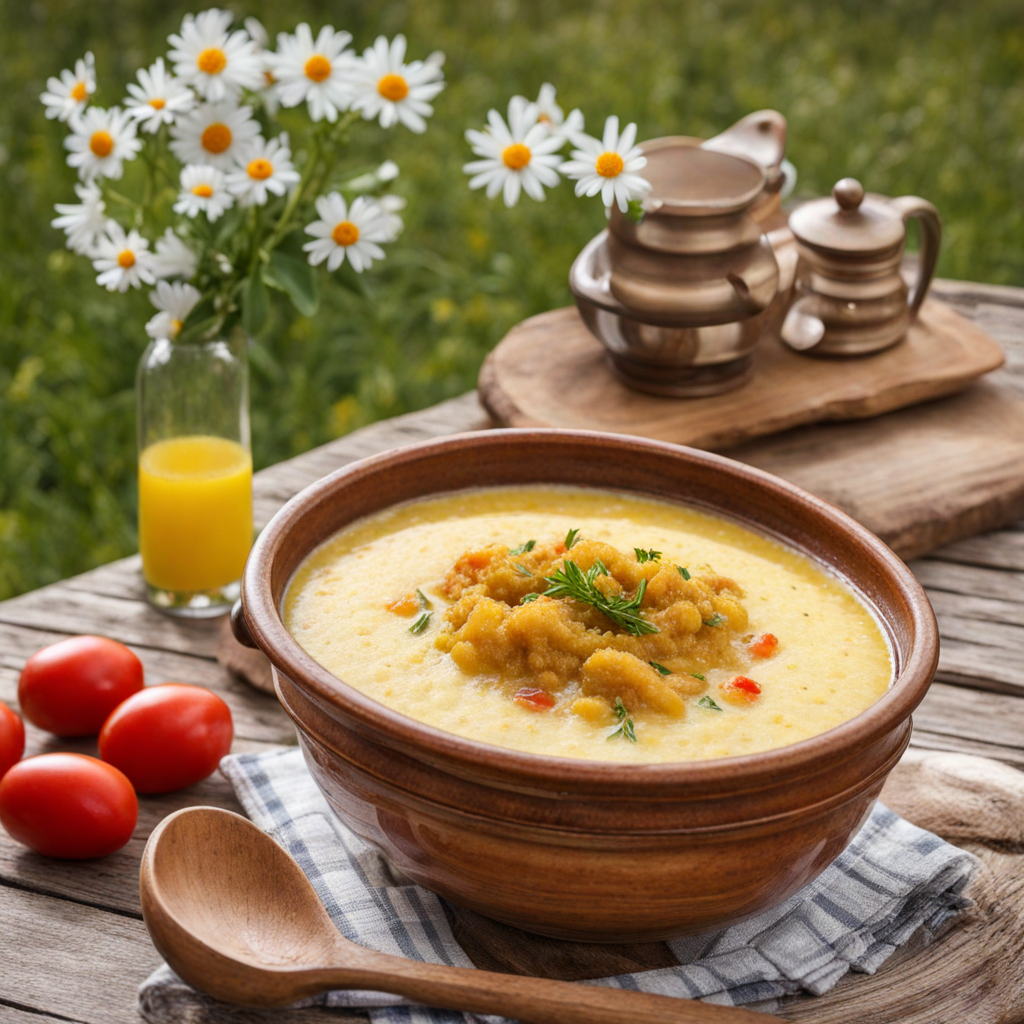Ciorbă de burtă
Ciorbă de burtă is a traditional Romanian soup that offers a delightful combination of flavors and textures, making it a beloved dish among locals. This hearty soup is primarily made from beef tripe, which is meticulously cleaned and cooked until tender, resulting in a unique and slightly chewy texture. The broth is a rich, creamy base enhanced by egg yolks and sour cream, creating a luscious mouthfeel that envelops each bite. The addition of vinegar or lemon juice gives the soup a refreshing tanginess, balancing the richness and elevating the overall taste experience. To further enhance its depth of flavor, Ciorbă de burtă is typically spiced with garlic and seasoned with black pepper, offering a warm, aromatic essence that complements the dish beautifully. The soup is often garnished with finely chopped parsley, adding a pop of color and a hint of freshness. Each bowl of Ciorbă de burtă is a comforting embrace, perfect for warming you up on a chilly day or serving as a hearty meal any time of the year. This dish is often enjoyed with a side of crusty bread, allowing diners to soak up the delicious broth, or it can be served with hot peppers for those who crave a bit of heat. Ciorbă de burtă not only showcases the culinary traditions of Romania but also embodies the spirit of communal dining, often shared among family and friends. This soup is not just a meal; it’s an experience that reflects the rich heritage and flavors of Romanian cuisine.
How It Became This Dish
Ciorbă de burtă: A Culinary Journey Through Romanian Tradition Ciorbă de burtă, or tripe soup, is a beloved dish in Romania, renowned for its rich flavors and comforting qualities. This traditional recipe encapsulates the soul of Romanian cuisine, intertwining history, culture, and the simple yet robust ingredients of the land. Its evolution reflects not only the culinary trends of Romania but also the cultural exchanges that have shaped the region over centuries. Origins: A Taste of Antiquity The origins of ciorbă de burtă can be traced back to the medieval period in Eastern Europe, when the use of offal was common among various cultures. Offal, which includes the internal organs and entrails of animals, was an essential part of the diet, particularly among poorer communities, as it was more affordable and often more accessible than prime cuts of meat. The use of tripe, specifically, can be found in many culinary traditions around the world, from the Italian "trippa" to the French "tripes à la mode de Caen." In Romania, the practice of making ciorbă de burtă likely emerged from the need to utilize every part of the animal. The soup is typically made with beef tripe, which is simmered slowly until tender. The dish also includes a variety of other ingredients, such as carrots, onions, and various spices, resulting in a hearty and flavorful broth. Over time, ciorbă de burtă has become synonymous with comfort food in Romanian households, especially during the colder months. Cultural Significance: More Than Just a Dish Ciorbă de burtă holds a special place in Romanian culture, often served as a restorative dish after festive occasions or long nights of celebration. Traditionally, it is viewed as a remedy for the effects of overindulgence, making it a staple in the aftermath of weddings, holidays, and family gatherings. The soup is served hot, often accompanied by sour cream and a generous squeeze of lemon, enhancing its tangy flavor. Beyond its culinary appeal, ciorbă de burtă embodies the spirit of communal dining. In Romania, sharing a meal is an act of hospitality and connection. The preparation of the soup is often a communal affair, with family members coming together to chop vegetables, season the broth, and share stories while they cook. This sense of togetherness is deeply rooted in Romanian culture, making ciorbă de burtă not just a dish, but a means of fostering relationships and creating memories. Development Over Time: Adaptations and Variations As with many traditional dishes, ciorbă de burtă has evolved over the years, adapting to contemporary tastes and influences. While the core ingredients have remained consistent, regional variations have emerged that reflect local preferences and available resources. In urban areas, for example, chefs have begun to experiment with the classic recipe, incorporating ingredients such as smoked meats or additional spices, which add depth and complexity to the flavor profile. In some cases, the soup is served with a side of polenta, a nod to the hearty agricultural traditions of Romania. Additionally, the rise of health consciousness has prompted some cooks to modify the recipe to make it lighter or more nutritious. Some variations include the use of chicken tripe instead of beef, while others focus on enhancing the broth with more vegetables and herbs, appealing to modern dietary preferences. Ciorbă de burtă in the Modern Culinary Landscape In recent years, ciorbă de burtă has gained recognition beyond the borders of Romania, with food enthusiasts and chefs showcasing this dish at culinary festivals and events around the world. Its unique flavors and comforting nature have captivated international audiences, paving the way for a resurgence of interest in traditional Romanian cuisine. Restaurants specializing in Romanian food are increasingly featuring ciorbă de burtă on their menus, presenting it alongside other classic dishes such as sarmale (cabbage rolls) and mămăligă (cornmeal porridge). This growing recognition has also fostered an appreciation for the cultural heritage that each dish embodies, allowing people to connect with Romania's rich culinary history. Moreover, the global pandemic of 2020 prompted many to return to home cooking, leading to a renewed interest in traditional recipes. Families began to share their cherished ciorbă de burtă recipes online, often accompanied by personal stories and memories associated with the dish. This online sharing not only preserved the traditional methods but also introduced newer generations to the art of making this beloved soup. Conclusion: A Dish of Resilience and Connection Ciorbă de burtă is more than just a dish; it is a symbol of resilience, tradition, and connection. Rooted in the humble practice of utilizing every part of the animal, this soup has transcended its origins to become a cherished staple of Romanian cuisine. Its evolution over the years reflects the changing tastes of society while remaining anchored in its cultural significance. As Romania continues to embrace its culinary heritage, ciorbă de burtă stands as a testament to the power of food to bring people together. It is a dish that tells a story—a story of history, community, and the enduring love for flavors that evoke a sense of home. Whether enjoyed at a family gathering or served in a bustling restaurant, ciorbă de burtă remains a dish that warms the heart and nourishes the soul, ensuring its place in the annals of Romanian culinary tradition for generations to come.
You may like
Discover local flavors from Romania







